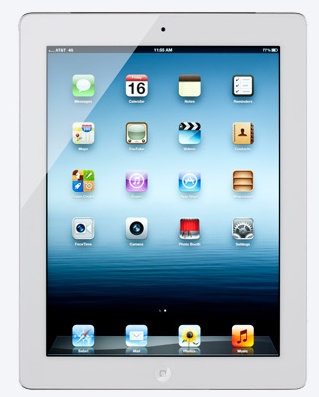Consumers who fully charge their iPad tablet every other day can expect to pay $1.36 for the electricity needed annually to power the device, according to an assessment by the Electric Power Research Institute (EPRI), which conducts research and development relating to the generation, delivery and use of electricity for the benefit of the public.
The analysis shows that each model of the iPad consumes less than 12 kWh of elelctricity over the course of a year, based on a full charge every other day. By comparison, a plasma 42-inch television consumes 358 kWh of electricity a year. EPRI (http://www.epri.com) conducted the analysis in Knoxville, Tenn., at its power utilization laboratory. Costs may vary depending on what region that a consumer resides and the price of electricity in a particular location.
The assessment was conducted to determine the load requirements – the amount of power needed to operate the devices — of the increasingly popular iPad. According to Apple, 67 million of the devices have been purchased worldwide.
The EPRI calculations show that the average energy used by all iPads in the market is approximately 590 gigawatt hours (GWh). In a scenario where the number of iPads tripled over the next two years, the energy required would be nearly equivalent to two 250-megawatt (MW) power plants operating at a 50 percent utilization rate. A quadrupling of sales in two years would require energy generated by three 250-MW power plants.
“As information technologies continue to change rapidly we see important implications for energy consumption,” said Mark McGranaghan, vice president of Power Delivery and Utilization at EPRI. “These results raise important questions about how the shifting reliance from desktop to laptop to mobile devices will change energy use and electricity requirements for the information age. At less than a penny per charge these findings bring new meaning to the adage, ‘A penny for your thoughts’.”
McGranaghan also pointed out that changes in battery technology and technology features will affect energy requirements. “Our measurements indicate that new iPads will consume about 65% more electricity per year,” he said. “What remains to be seen is how better batteries, better features and changing preferences will affect overall energy consumption by consumers as a whole.”
The EPRI analysis shows that the Apple iPhone 3G consumes 2.2 kWh of electricity each year, which results in a power cost of $.25 annually. Other products that were included in the analysis were laptops, which consume 72.3 kWh of electricity each year and cost consumers $8.31 and 60W CFL light bulbs which consume approximately 14 kWh of electricity and cost consumers $1.61 a year.


